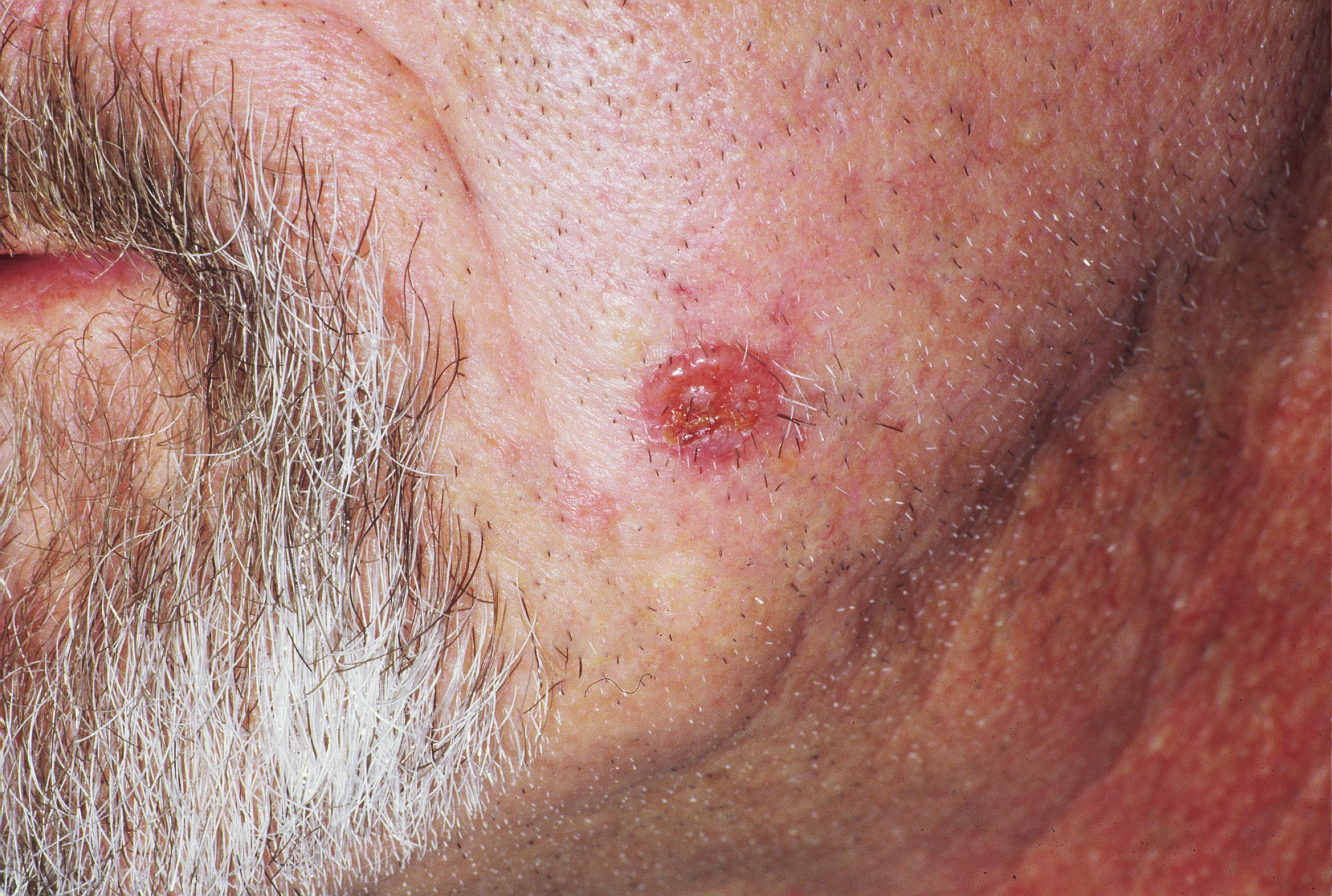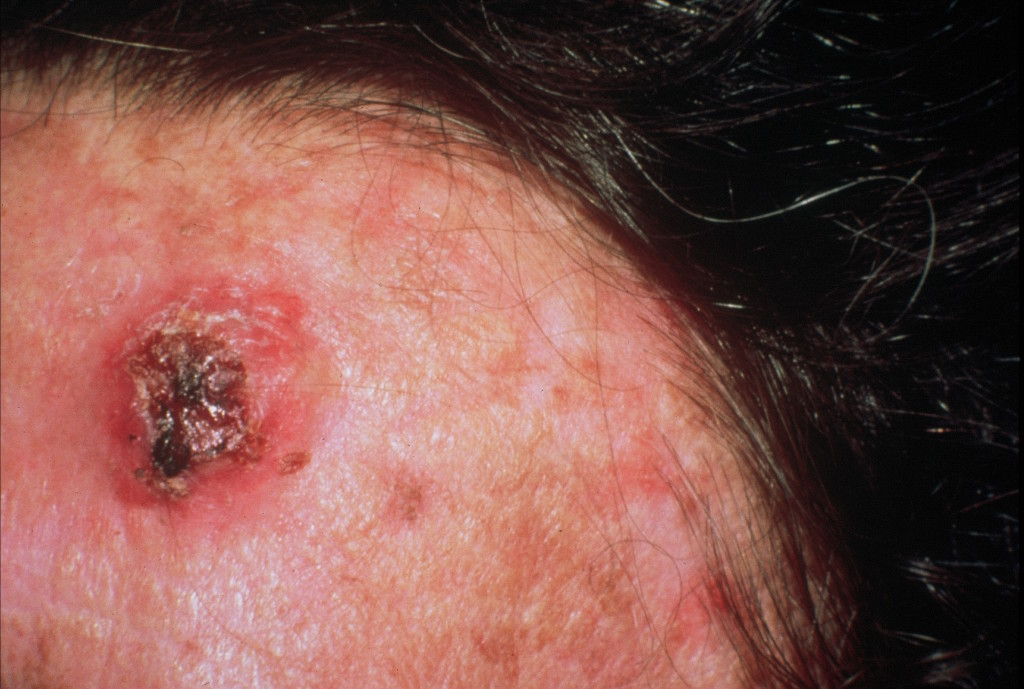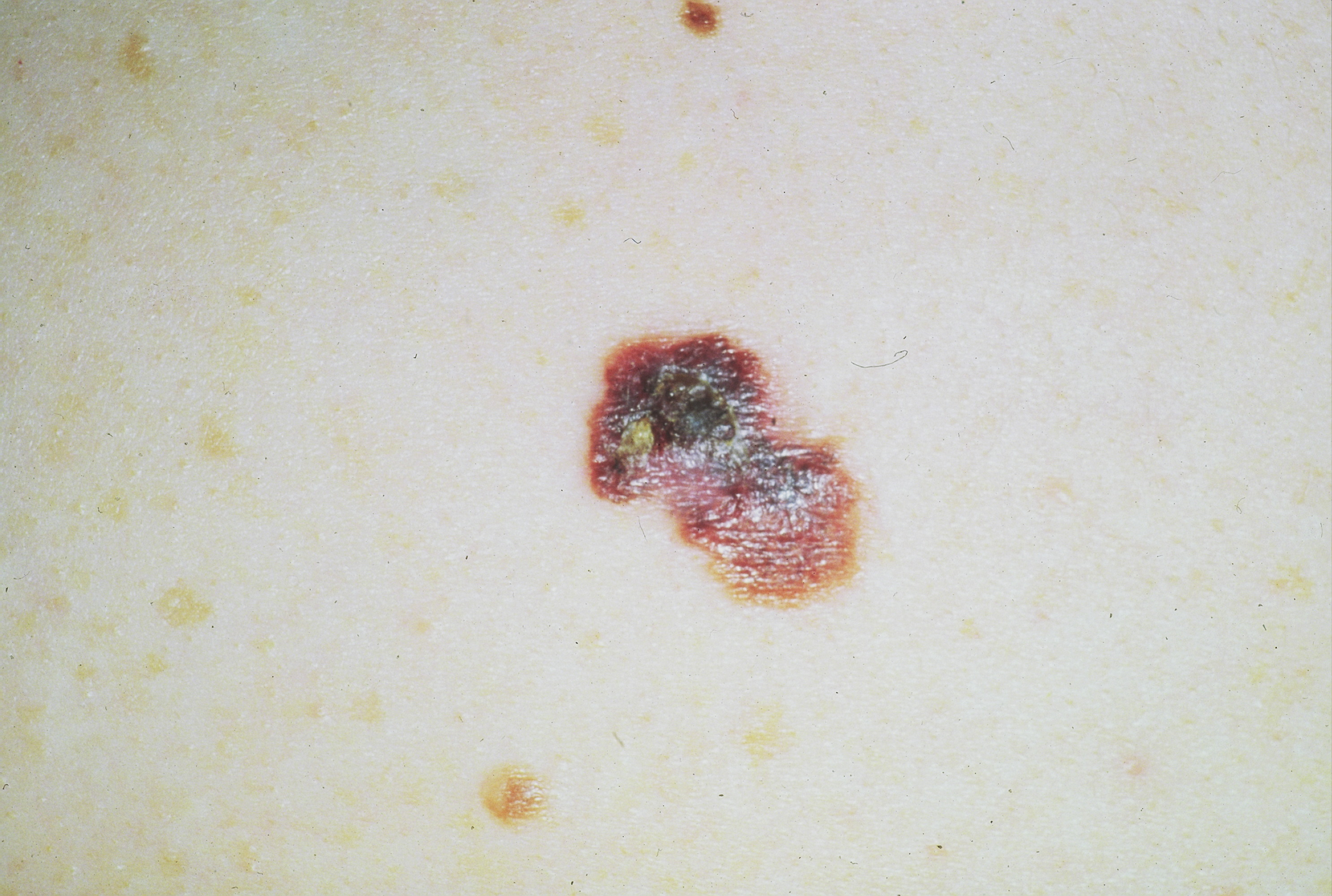BASAL CELL CARCINOMA
Basal cell carcinoma (BCC) is the most common form of cancer worldwide. In the vast majority of cases, it is thought to be caused by exposure to the harmful ultraviolet rays of the sun. It is becoming more common, perhaps because people may be spending more time outdoors. Some believe that the decrease in the ozone layer is allowing more ultraviolet radiation from the sun to reach the earth’s surface. Basal cell cancer does not usually metastasize or travel in the bloodstream; rather it infiltrates the surrounding area destroying tissue. For this reason, basal cell cancer should be treated promptly by your dermatologist with dermatologic surgical techniques.
.


SQUAMOUS CELL CARCINOMA
Squamous cell carcinoma (SCC) is the second most common skin cancer. It is thought to be caused by exposure to the harmful ultraviolet rays of the sun. Unlike basal cell carcinoma, 1-2% of squamous cell carcinomas can metastasize to local lymph nodes. This makes the cancer much more difficult to treat. For this reason, squamous cell carcinoma should be caught early and treated promptly to minimize the risk of local extension or metastasis of this cancer. Mohs surgery is an effective way of doing this.
MELANOMA
Melanoma is the deadliest form of skin cancer. Melanoma frequently develops in a mole or suddenly appears as a new dark spot on the skin. More people are getting melanoma. Melanoma is now the most common cancer among people 25-29 years old. Even teenagers can get melanoma. When melanoma grows deeper into the skin or spreads, treatment becomes more complex. Early diagnosis and treatment are crucial. We do not treat melanoma by the Mohs technique. This is because regression “skip” areas make following out tumor extensions unreliable.

